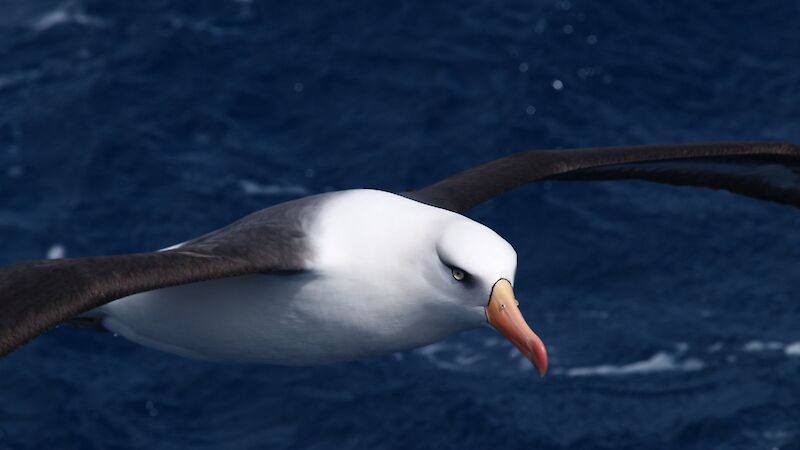There is a long history of exploitation of Antarctic marine living resources through activities such as sealing, whaling and fishing, with consequent damage to the ecosystem. A number of species have become threatened by over-harvesting and illegal fishing, and some species are now vulnerable to the threat of extinction due to non-targeted human activities. The risk of introduced diseases to Antarctic wildlife grows as the number of visitors to the region increases.
The AAD has undertaken research into wildlife disturbance and has developed guidelines and resources such as posters and videos. These help educate visitors about their potential to disturb wildlife, including information on appropriate approach distances at varying times in the breeding cycles of different species. To protect animals from disturbance by aircraft, the AAD has developed similar guidelines for aircraft operations.
Vegetation in the Antarctic and subantarctic regions is believed to be a valuable indicator of global climate change. As part of a 12-year, multi-disciplinary program, AAD scientists are currently participating in an international project investigating sensitivity to climate change in terrestrial ecosystems. The project aims to understand the interactions between climate change and biodiversity, and the functioning of Antarctic terrestrial and lake ecosystems.
We tend to think that plant communities are based on land – but in fact, 30% of the world’s vegetation exists as microscopic marine vegetation such as marine algae which range in size from single cells to seaweeds the size of trees. By far the most important are the single celled phytoplankton. In addition to being the base of the food web on which essentially all other marine organisms depend, phytoplankton in the Southern Ocean play a significant role in influencing global climate by absorbing large volumes of carbon dioxide and influencing cloud formation, which has an impact on regional climate.
The Madrid Protocol provides special protection to plants and animals whose populations are known to be especially vulnerable, and Australian law requires a permit to be issued for any activity requiring interference in any way. Permits are only granted for compelling scientific reasons.
Several conventions and agreements exist to protect and conserve Antarctica’s unique plants and animals. These include the Convention on the Conservation of Antarctic Marine Living Resources (CCAMLR) and the Agreement for the Conservation of Albatrosses and Petrels (ACAP).
The Australian station of Casey is home to well-developed moss and lichen communities. These communities are being studied to determine the impact of global climate change. Entry into the special areas protecting the most prolific moss growth is by permit.
Before departure from Australia, all expeditioners receive environmental training from the AAD on how best to minimise any possible effects of their presence on plant and animal communities.

